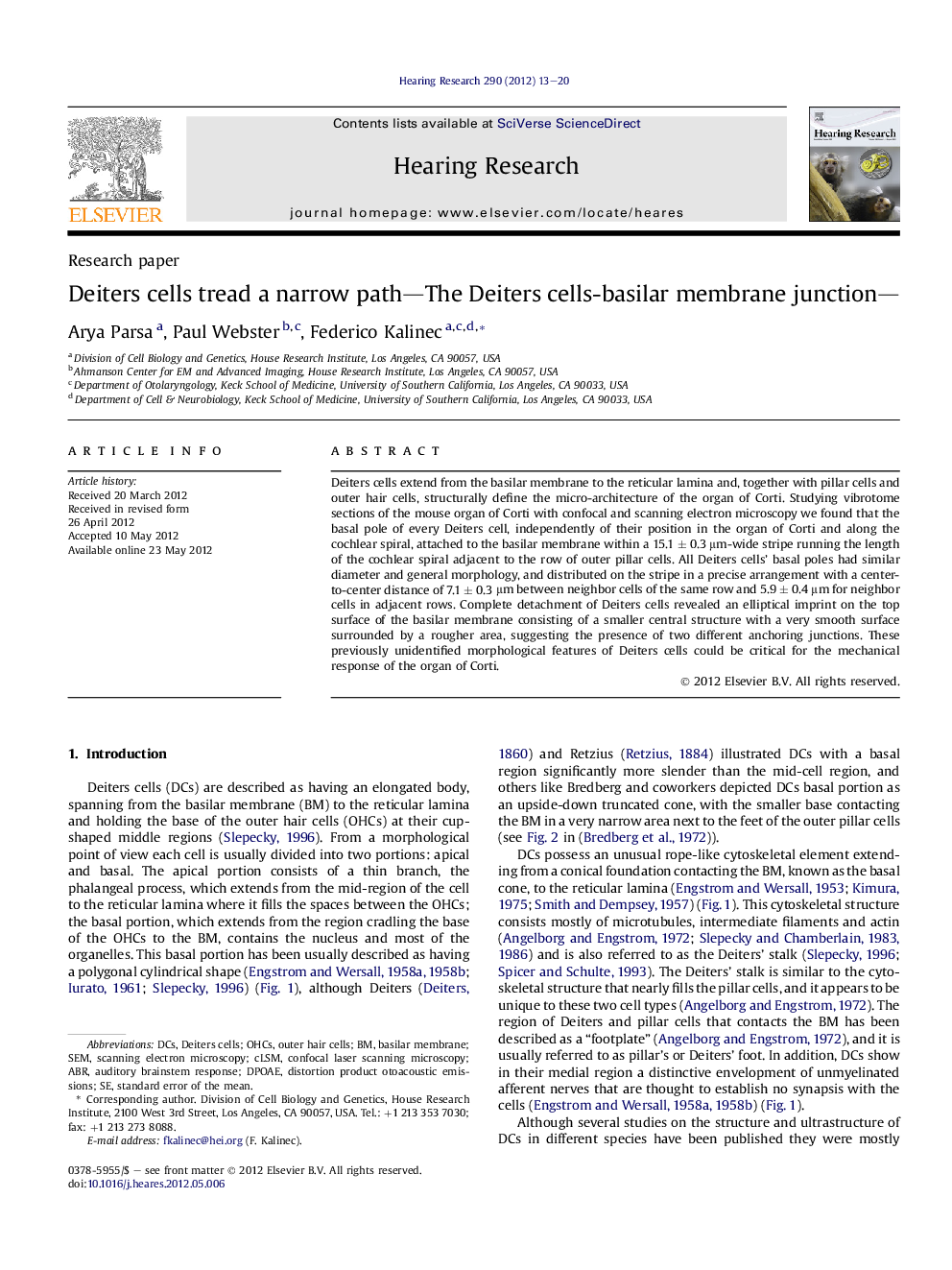| Article ID | Journal | Published Year | Pages | File Type |
|---|---|---|---|---|
| 4355315 | Hearing Research | 2012 | 8 Pages |
Deiters cells extend from the basilar membrane to the reticular lamina and, together with pillar cells and outer hair cells, structurally define the micro-architecture of the organ of Corti. Studying vibrotome sections of the mouse organ of Corti with confocal and scanning electron microscopy we found that the basal pole of every Deiters cell, independently of their position in the organ of Corti and along the cochlear spiral, attached to the basilar membrane within a 15.1 ± 0.3 μm-wide stripe running the length of the cochlear spiral adjacent to the row of outer pillar cells. All Deiters cells' basal poles had similar diameter and general morphology, and distributed on the stripe in a precise arrangement with a center-to-center distance of 7.1 ± 0.3 μm between neighbor cells of the same row and 5.9 ± 0.4 μm for neighbor cells in adjacent rows. Complete detachment of Deiters cells revealed an elliptical imprint on the top surface of the basilar membrane consisting of a smaller central structure with a very smooth surface surrounded by a rougher area, suggesting the presence of two different anchoring junctions. These previously unidentified morphological features of Deiters cells could be critical for the mechanical response of the organ of Corti.
Graphical abstractFigure optionsDownload full-size imageDownload high-quality image (164 K)Download as PowerPoint slideHighlights► DCs' feet, independently of cell's position, are similar in diameter and morphology. ► DCs' feet attach to the BM in a narrow stripe running all along the cochlear spiral. ► DCs' feet would be connected to the BM by two different junctional complexes.
